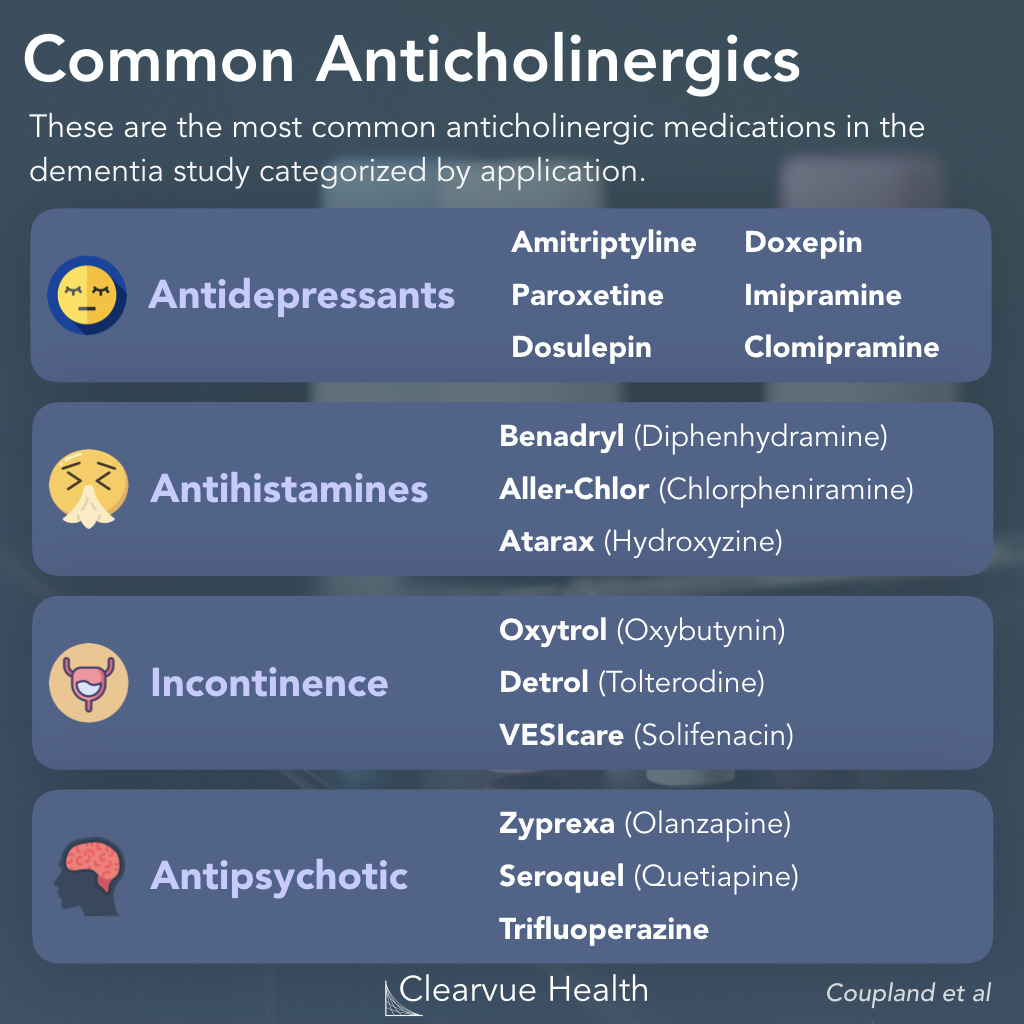examples
Here are some common examples of anticholinergic medications, along with their typical uses:
1. Atropine
- Uses: Treats slow heart rate (bradycardia) and is used in certain poisoning cases, such as exposure to nerve agents.
- Source: Cleveland Clinic
2. Benztropine (Cogentin)
- Uses: Often prescribed for Parkinson’s disease and to manage side effects of antipsychotic medications.
- Source: Healthline
3. Scopolamine
- Uses: Used to prevent nausea and motion sickness, often delivered via a transdermal patch.
- Source: Mayo Clinic
4. Diphenhydramine
- Uses: An antihistamine used to relieve allergy symptoms, but has strong anticholinergic properties.
- Source: Medical News Today
5. Dicyclomine (Bentyl)
- Uses: Prescribed to treat irritable bowel syndrome (IBS) and to relieve gastrointestinal cramping.
- Source: Wikipedia
6. Glycopyrrolate
- Uses: Used to reduce drooling and to manage symptoms of peptic ulcers and chronic obstructive pulmonary disease (COPD).
- Source: StatPearls
7. Trihexyphenidyl
- Uses: Used to treat Parkinson's disease and to help control drug-induced movement disorders.
- Source: Medical News Today
These medications serve various purposes, from treating motion sickness and allergies to managing symptoms of more complex health issues. It's important to consult with a healthcare provider before starting any medication to understand both its benefits and potential side effects.
Sources
Anticholinergics: List, Side Effects, Uses, Warnings, and MoreAnticholinergic Drugs Uses & Side Effects - Cleveland ClinicAnticholinergic drugs: Uses and side effects - MedicalNewsTodayAnticholinergic Medications - StatPearls - NCBI BookshelfWhat you need to know about anticholinergic medicationsAnticholinergics and antispasmodics (oral route ... - Mayo ClinicAnticholinergic - Wikipedia


Related Questions
Work fast from anywhere
Stay up to date and move work forward with BrutusAI on macOS/iOS/web & android. Download the app today.
